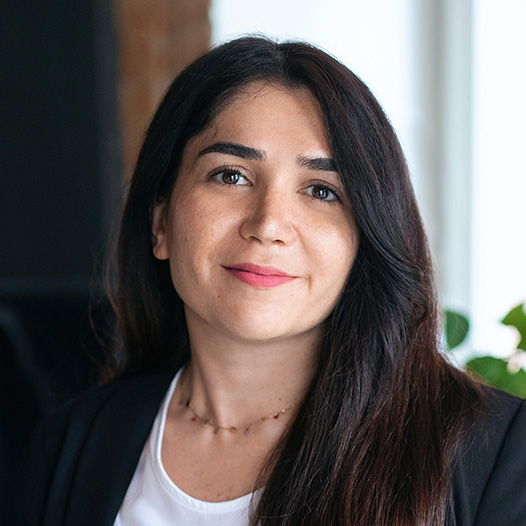Bengisu Yilmaz | BAM (Bundesanstalt für Materialforschung und Prüfung)
23rd May 2022
Today, we are delighted to interview Mrs. Bengisu Yilmaz, PHD at Kaunas Technical University and now NDT researcher at BAM (Bundesanstalt für Materialforschung und Prüfung), about her recent works dealing with POD and Model Assisted POD.

You have recently and successfully completed your PHD at Kaunas Technical University including the work “MAPOD (Model Assisted POD) based reliability assessment of ultrasonic features for bonding quality evaluation”. Could you tell us more about the industrial context of these works?
Compared to mechanical fasteners, adhesive bonding provides superior joining technology with advantages like homogenous load distribution. Especially when joining composite materials, it is preferred to use adhesive bonding because it doesn’t require drilling on the substrate, hence the fiber integrity is maintained. Although the interest in composite materials increased significantly, the usage of adhesive bonding is limited due to the lack of reliable nondestructive testing and evaluation techniques. Indeed, my PhD was titled “Evaluation of bonding quality in aircraft structures using different nondestructive testing methods”. The motivation of my thesis was to develop a reliable nondestructive evaluation (NDE) methodology to evaluate the bonding quality. And the last chapter of the thesis was focused on the reliability assessment of the developed NDE methods by using model assisted probability of detection (MAPOD).
In this MAPOD context, numerical simulation was naturally an essential part of your work. In your opinion, what are the benefits and also the limits when using simulation for POD studies?
Obtaining probability of detection curves is a very significant but at the same time a very costly task. It requires numerous samples, each accompanied by multiple experiments performed by several inspectors or inspection systems. I think the most important advantage when using simulation for POD studies is to eliminate these costs. In addition, it also increases the applicability. For example, the defect characteristics that are too difficult to produce in a real-life specimen can be simulated easily.
On the other hand, implementing numerical simulation to POD estimation increases the complexity. One should always consider the assumptions involved in the numerical study even after validation with experiments. Also, there are some uncertainties that are challenging to simulate and implement in the numerical model, such as human factors.
What features available in CIVA for this type of studies could you highlight? Could you also mention some additional features or improvement that would be needed?
In my opinion, being able to use metamodels in a CIVA variation study is a significant time saver. Also, being able to implement a script for post-processing made it very cost-efficient to extract different time-series features from ultrasonic inspection results. However, when we start the POD module in CIVA by reading the calculated metamodel, it can identify only the first one of those extracted features. I think the availability to choose amongst extracted features might be a useful improvement for the next update.
A few years ago, you participated in the “Reliability in NDE” training proposed by EXTENDE. How was it useful for your PHD works?
The workshop covered a large variety of topics: basic statistical theory, ROC curves, POD curves, design of experiments, and more. Having all the information packed together helped me clarify the terminology related to reliability in NDE. Also, we had practice sessions with several tools such as MH-1823 POD calculator. Those were step-by-step methodologies on how to estimate reliability. I revisited my notes several times after the training.
You recently started a new position as a researcher at BAM (Bundesanstalt für Materialforschung und prüfung). Could you describe your role within this institute?
At BAM, I am part of the Acoustic and Electromagnetic Techniques division under NDT department. I am working on an interdisciplinary project called QI-Digital, and it aims to design a modern quality infrastructure. As part of the structural health monitoring team, we work towards building a digital twin for the hydrogen filling station. We are planning to utilize several SHM methods, namely ultrasonic Guided Waves, fiber optic sensors and acoustic emission. Although it is not limited to this, my main contribution includes validation of SHM results, signal processing, data fusion, and reliability analysis. The project is expected to run till the end of 2024 and is supported by the Federal Ministry for Economic Affairs and Energy (BMWi) in Germany.
